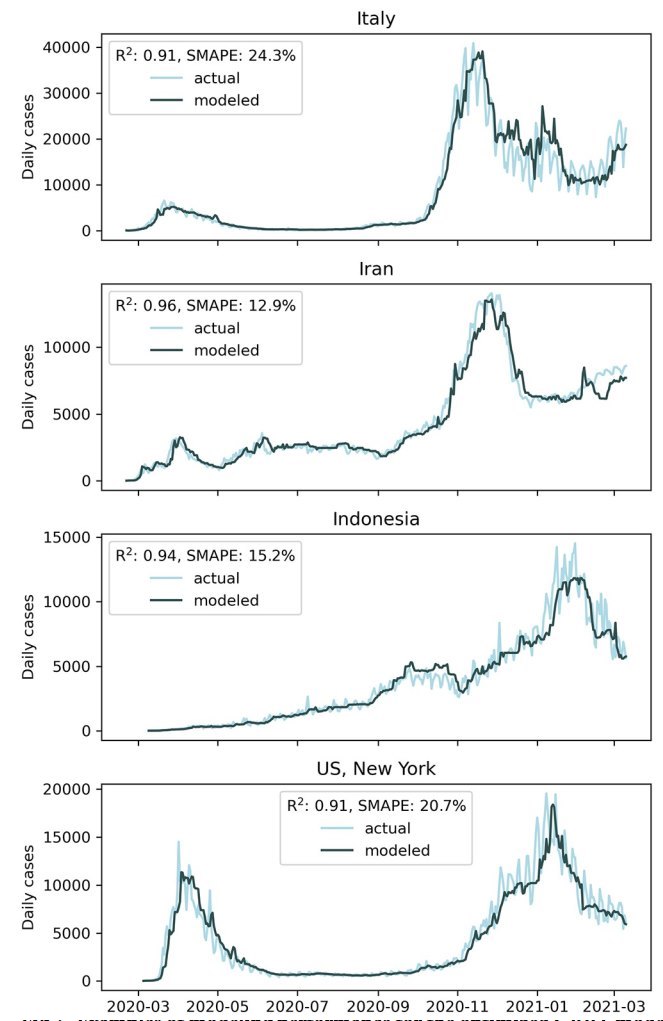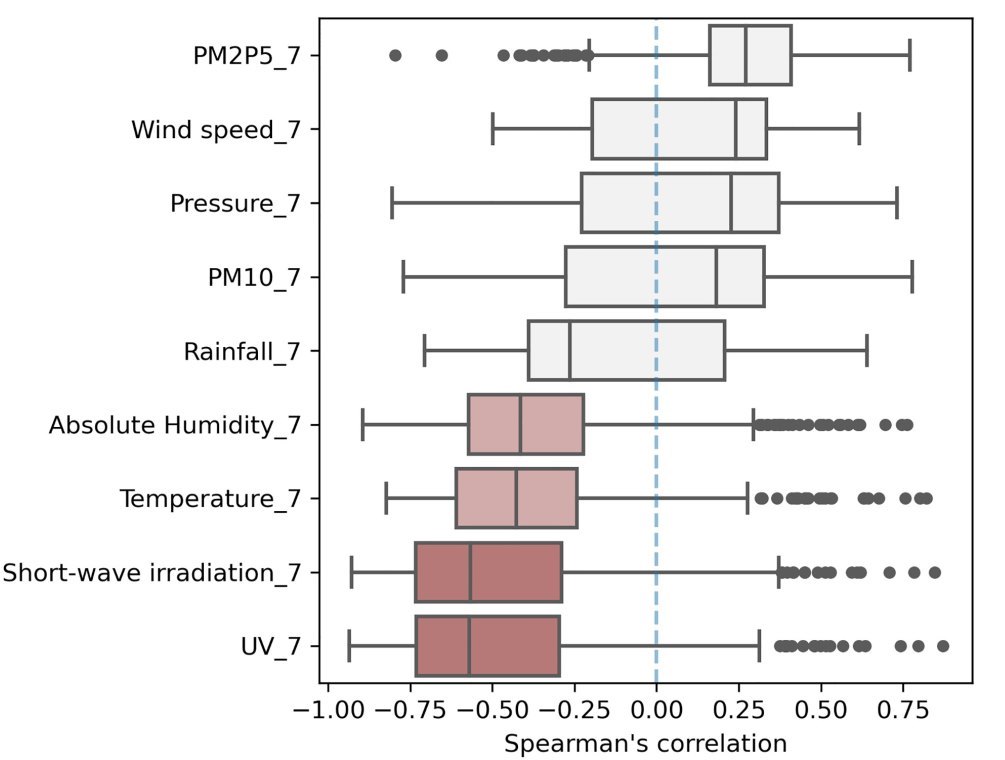Model discovered: More UV, less COVID (many excellent charts)
Does climate help modeling COVID-19 risk and to what extent?
PLOS x https://doi.org/10.1371/journal.pone.0273078
Charts of model vsactual COVID for various countries and cities


Model found the strongest atmospheric association of COVID to be with UV

A growing number of studies suggest that climate may impact the spread of COVID-19.
This hypothesis is supported by data from similar viral contagions, such as
SARS and the
1918 Flu Pandemic, and corroborated by
US influenza data.
However, the extent to which climate may affect COVID-19 transmission rates and help modeling COVID-19 risk is still not well understood. This study demonstrates that such an understanding is attainable through the development of regression models that verify how climate contributes to modeling COVID-19 transmission, and the use of feature importance techniques that assess the relative weight of meteorological variables compared to epidemiological, socioeconomic, environmental, and global health factors. The ensuing results show that meteorological factors play a key role in regression models of COVID-19 risk, with ultraviolet radiation (UV) as the main driver. These results are corroborated by statistical correlation analyses and a panel data fixed-effect model confirming that UV radiation coefficients are significantly negatively correlated with COVID-19 transmission rates
Model learned from 14 months of data from 152 countries
📄 Download the PDF from VitaminDWiki
R2 >0.9 indicates a strong assocation

VitaminDWiki - studies in both categories Virus and UV
This list is automatically updated
{category}
Other Virus and UV on the web
Low Temperature and Low UV Indexes Correlated with Peaks of Influenza Virus Activity in Northern Europe during 2010⁻2018 - March 2019 [doi: 10.3390/v11030207] FREE PDF
The virucidal effects of 405 nm visible light on SARS-CoV-2 and influenza A virus - Sept 2021 https://doi.org/10.1038/s41598-021-97797-0 FREE PDF
Associations between predicted vitamin D status, vitamin D intake, and risk of severe acute respiratory syndrome coronavirus 2 (SARS-CoV-2) infection and coronavirus disease 2019 (COVID-19) severity April 2022 [doi: 10.1093/ajcn/nqab389] FREE PDF
Most of the meta-analyses have found more Vitamin D is associated with less COVID
This list is automatically updated
{category}
Reminded: UV produces Nitric Oxide (UVA) - perhaps enough from summer sun to make a difference
Ultraviolet A radiation and COVID-19 deaths in the USA with replication studies in England and Italy - Aug 2021 - https://[doi: 10.1111/bjd.20093] FREE PDF
Ultraviolet Radiation A (UVA): Modulates the Production of Nitric Oxide (NO) to Combat COVID-19 Production of Nitric Oxide (NO) Coronavirus Disease - Jan 2021 ResearchGate FREE PDF
Nitric Oxide: The Missing Factor in COVID-19 Severity? - March 2022 https://[doi: 10.3390/medsci10010003] FREE PDF
Harnessing nitric oxide for preventing, limiting and treating the severe pulmonary consequences of COVID-19 - Oct 2020 - https://doi.org/10.1016/j.niox.2020.07.003 FREE PDF
Putative roles of solar UVA and UVB exposure and vitamin D supplementation in reducing risk of SARS-CoV-2 infection and COVID-19 severity - April 2022 https://doi.org/10.1093/ajcn/nqab437 FREE PDF
